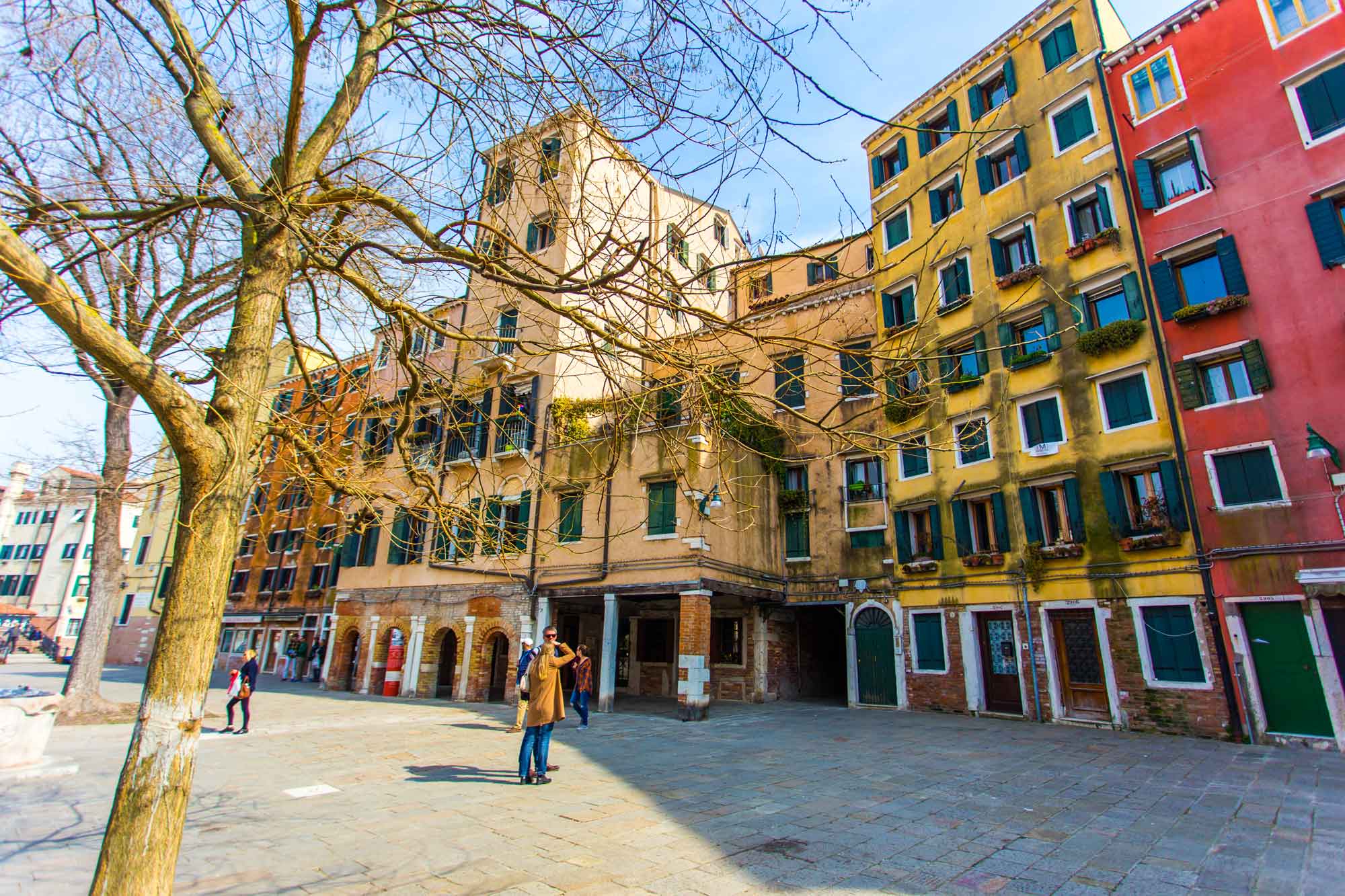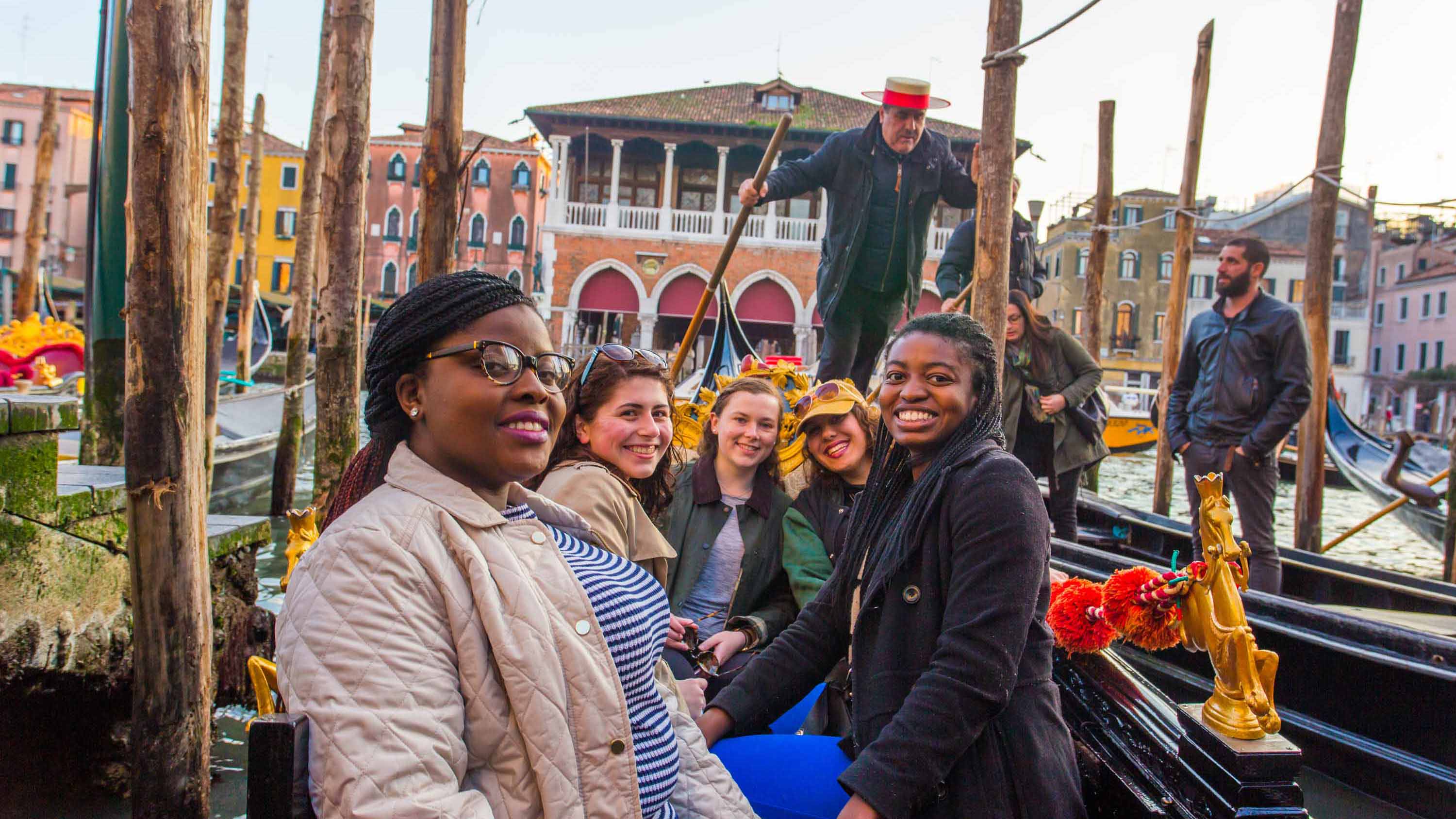For many of us, the word “ghetto” conjures up images of places like the Warsaw Ghetto in Poland where Jews were confined by the Nazis during World War II. But as 20 students in Religion Prof. Marc Epstein’s Jewish Studies class learned during Spring Break, the first such ghetto was established by Venetian authorities 500 years ago.
Epstein and his students spent 10 days in the tiny community where Venetian Jews were required to live from 1516 until 1797, when they were liberated by Napoleon’s army. During their stay, the students met with scholars of Jewish history and religion as well as with members of the small, present-day Jewish community.

As early as the 14th century, Epstein explains, Jews served as money lenders for Italian merchants because Christians were not permitted to charge interest to other Christians for loans. Venice’s leaders never fully tolerated Jews, however, and in 1516, the ruling council forced all Jews in the city to live in a small enclave with guarded gates that were locked every night. “Jews were required to live in the confined space of the very first ‘ghetto,’ named after an old foundry, or ‘geto,’ that had existed there,” Epstein says. “They lived communally, creating art and music and dance in this tiny community the equivalent of about two-and-a-half city blocks.” By 1650, the population reached a peak of 4,000 inhabitants. Several hundred Jews still live in Venice, although primarily not in the ghetto, today.
To prepare for the trip, the students read historical accounts of life in the ghetto as well as literary works such as Shakespeare’s Merchants of Venice, (first performed in 1609 and recently presented for the first time in the Ghetto Square), the story of intrigue and betrayal involving the Jewish moneylender, Shylock. Guest speakers for the Vassar tour included Shaul Bassi, a professor of comparative literature at Ca’Foscari University if Venice; Dr. Barbara Del Mercato, administrative director of Beit Venezia, formerly the Venice Center for International Jewish Studies, and Rabbi Shalom Morris of the Bevis Marks Synagogue in London.
During the second half of the semester, the students will work in teams of four or five to develop presentations on various aspects of Jewish life in Venice. Alec Ferretti ’17, an anthropology and Italian major from Bellmore, NY, will collaborate with three other students on a video documentary depicting Venetian Jews and their life in the ghetto.
Ferretti says he gained a new perspective on this aspect of Jewish history and culture by taking the course and going on the trip. “One of the main things I took away from this course was how adaptable the Jewish people have been, how they have assimilated with other cultures wherever they have gone throughout history,” he says.
“The ghetto was a mesh of cultures from all over Europe when it began, and it still is today,” Ferretti says. “When we were at a service in a synagogue, the rabbi was speaking Hebrew alternating with Italian and many others were speaking Italian. There were some Americans speaking English in one corner and some Hasidic Jews from Israel in another speaking Hebrew and Yiddish.”
